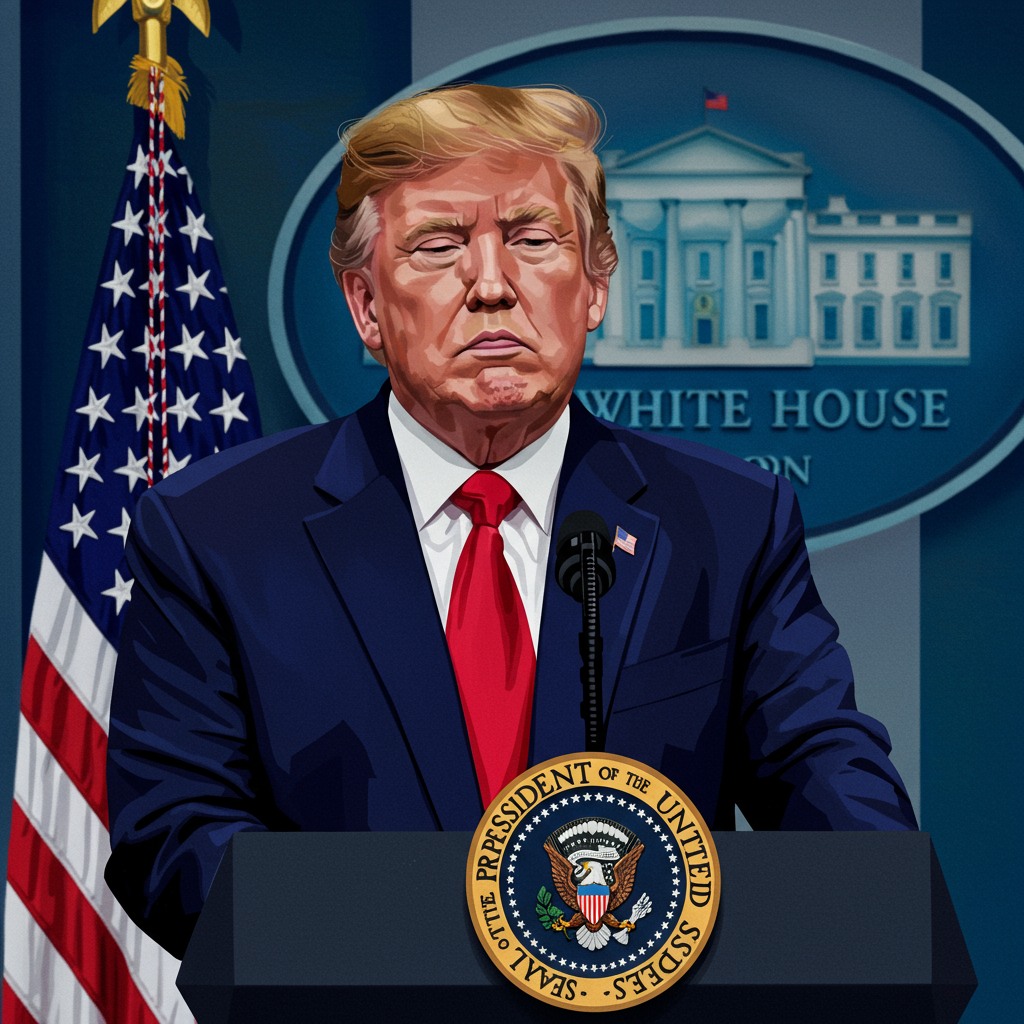The United States House of Representatives has passed a landmark legislative package widely referred to as the “trump agenda megabill.” This sweeping domestic policy bill, a major priority for President Donald Trump, narrowly cleared the chamber with a vote of 218 in favor and 214 against. Its passage marks a significant political victory for Republicans, arriving after intense negotiations and unified Democratic opposition.
The legislation now heads to President Trump’s desk, where he is expected to sign it into law during a ceremony scheduled for Friday, July 4th. The date chosen holds symbolic weight, aligning with his administration’s framing of the bill as a renewal of American promise and economic vitality. While hailed by proponents as a transformative step forward, critics argue the bill represents a drastic shift in national priorities that will disproportionately harm vulnerable populations while benefiting corporations and the wealthy.
The Narrow Path to Passage
Securing enough votes for the bill’s passage in the House proved to be a significant challenge for Republican leadership. Despite holding a majority, the vote tally of 218-214 indicated a tight margin. This outcome reflected a near-party-line split. Every single one of the 212 House Democrats present voted against the measure.
The Republican side also saw limited dissent. Only two Republican representatives, Thomas Massie of Kentucky and Brian Fitzpatrick of Pennsylvania, ultimately voted no on the final passage. This near-unified Republican front followed extensive efforts by President Trump, House Speaker Mike Johnson, and Vice President JD Vance to persuade reluctant members over the preceding 24 hours. These efforts reportedly included meetings at the White House and numerous late-night phone calls, although Trump administration officials denied making explicit deals with holdouts.
The bill had previously cleared the Senate by an even narrower 51-50 vote, with Vice President JD Vance casting the tie-breaking vote. This dual passage sends a powerful signal about the Republican party’s legislative priorities following recent electoral gains.
Unpacking the “One Big, Beautiful Bill”
Dubbed the “One Big, Beautiful Bill” by supporters, this extensive legislation touches upon numerous facets of American life and the federal budget. It permanently extends the significant tax reductions first enacted during President Trump’s initial term in 2017. These extensions form a core component of the bill, impacting individuals and corporations alike.
Beyond the permanent extension of prior tax cuts, the bill introduces new, albeit temporary, tax breaks. These include provisions allowing deductions of up to $25,000 for tips and $12,500 for overtime pay until December 31, 2028, though these deductions are reduced for higher earners. The legislation also provides new benefits for businesses and rolls back clean energy tax credits that were established under the previous administration. Furthermore, it temporarily lifts the federal deduction cap for State and Local Taxes (SALT) to $40,000 for married couples with incomes up to $500,000, a provision set to expire after 2028. For families, the bill permanently raises the maximum Child Tax Credit to $2,200 starting in 2025 and ties it to inflation, while also implementing a temporary Social Security tax deduction for seniors through 2029. The nonpartisan Congressional Budget Office (CBO) has projected that the overall tax and spending changes within the bill will increase federal deficits by an estimated $3.4 trillion over the next decade.
Significant Spending Shifts and Reductions
The legislation mandates substantial shifts in federal spending. It includes significant increases for military funding and border security initiatives. Specific allocations for border security outlined in the bill include substantial funding aimed at completing sections of the border wall, upgrading facilities for Customs and Border Protection, enhancing broader border security efforts, and supporting the hiring and retention of agents along with technology upgrades for screenings and surveillance.
Conversely, the bill proposes deep reductions in funding for key social safety net programs. Medicaid, the joint state and federal health insurance program for low-income individuals and those with disabilities, faces nearly $1 trillion in cuts over the next decade according to some estimates. These cuts are projected by the CBO to result in nearly 12 million people losing health insurance coverage, with other estimates suggesting potentially up to 20 million people could lose coverage.
Controversial Changes to Program Eligibility
A particularly contentious element of the social program cuts involves implementing nationwide Medicaid work requirements. Starting in January 2027, most “able-bodied” adults under age 65 will be required to work 80 hours per month to qualify for benefits, though exemptions exist for students, caregivers, and individuals with disabilities, including parents of children older than 13. The bill also requires states to check Medicaid eligibility twice annually instead of the current once per year. Concerns were raised that capping a tax states can impose on Medicaid providers could harm rural hospitals, leading to the inclusion of a new $50 billion fund spread over five years beginning in 2028 to support them.
Changes also target the Supplemental Nutrition Assistance Program (SNAP), commonly known as food stamps. The bill expands work requirements for able-bodied adults up to age 64, with exemptions for parents of children under 14. It limits states’ ability to waive these requirements and shifts a greater share of program costs to states based on erroneous payment rates. These changes are set to take effect in 2028 and could potentially remove millions of people from the food assistance program.
Reshaping Energy Policy and Other Provisions
The “megabill” includes a significant shift in U.S. energy policy. It aims to end long-standing federal support for renewable energy sources like solar and wind power. By rolling back clean energy tax credits, the legislation creates a more favorable environment for oil, gas, and coal production, aligning with President Trump’s stated preferences. Critics argue this shift will likely lead to fewer renewable energy projects, increased reliance on natural gas, potential increases in electricity bills for consumers, and could negatively impact domestic clean energy manufacturing jobs.
Among its numerous other provisions, the bill includes increasing the nation’s debt limit by $5 trillion. This move is necessary to allow the government to pay for spending already authorized by Congress and prevents a potential default, which the CBO had warned could occur between mid-August and late September without legislative action. The bill also introduces new or increased fees for immigration services, such as a $550 charge for work authorization applications requiring six-month renewals. Changes to the tax code for gamblers are included, limiting the deduction of yearly losses to 90% starting in 2026. Additionally, the legislation enacts an overhaul of federal student loan programs, eliminating options like the Biden-era SAVE plan and replacing them with new alternatives, while also capping annual borrowing amounts for parents and graduate students.
An Intense Political Showdown
The passage of this bill followed an intense political battle on Capitol Hill. While Republican leaders worked tirelessly to secure votes, Democrats were unified in their fierce opposition. House Minority Leader Hakeem Jeffries emerged as a leading voice against the legislation, delivering a record-breaking floor speech that lasted over eight-and-a-half hours. Jeffries vehemently criticized the bill, calling it a “disgusting abomination” and arguing that it “guts Medicaid, rips food from the mouths of children, seniors and veterans, and rewards billionaires with massive tax breaks.” Other Democrats echoed his sentiments, describing the bill as “cruel” and “reckless.”
Democrats plan to make the bill a central campaign issue in upcoming elections, highlighting the projected negative impacts of the cuts to social programs and the benefits provided to the wealthy and corporations through tax breaks. Grassroots efforts, including planned “Accountability Summer” events, aim to target Republican representatives who voted for the bill in districts likely to be affected by the spending reductions.
What’s Next: Presidential Signature
Having passed both the House and the Senate, the “Trump agenda megabill” now awaits the President’s signature. President Trump has expressed his strong support for the legislation, hailing it as the “biggest bill of its kind ever signed” and containing the “Largest Tax Cuts in History.” He predicted the bill would propel the country forward like a “rocket ship.”
His signing of the bill on July 4th is expected to solidify these sweeping policy changes. The legislation represents a significant legislative achievement for the Republican party and the Trump administration, enacting broad reforms across taxation, spending, energy, and social programs that will shape the national landscape for years to come.
Frequently Asked Questions
What are the major policy changes included in the Trump agenda megabill?
The “megabill” enacts wide-ranging changes. Key provisions include permanently extending the 2017 tax cuts, introducing new temporary tax deductions (like for tips and overtime), increasing spending on the military and border security, and implementing deep cuts to social safety net programs such as Medicaid and SNAP. It also significantly alters U.S. energy policy by phasing out support for renewable sources and favoring fossil fuels, and raises the nation’s debt ceiling.
Which Representatives voted against the Trump megabill in the House?
In the U.S. House of Representatives vote, the bill passed 218-214. All 212 Democratic representatives voted against the measure. They were joined by only two Republican representatives who also cast votes against the bill: Thomas Massie of Kentucky and Brian Fitzpatrick of Pennsylvania. The remaining Republican members provided the necessary votes for its passage.
How is the Trump megabill expected to affect programs like Medicaid and SNAP?
The bill is projected to have significant impacts on Medicaid and SNAP. It includes deep cuts to Medicaid funding, estimated at nearly $1 trillion over a decade, which the CBO projects could lead to nearly 12 million people losing health coverage. It also imposes new work requirements for eligible adults under 65 (for Medicaid) and under 64 (for SNAP), limits states’ ability to waive requirements, and could remove millions from food assistance programs.
The passage of the “Trump agenda megabill” marks a pivotal moment in federal policy. Enacting significant tax cuts, reshaping federal spending priorities, and altering key social programs, the legislation is set to dramatically impact the lives of millions of Americans. While celebrated by proponents as a necessary step for economic growth and fiscal responsibility, it has drawn fierce criticism for its projected effects on vulnerable populations and the national debt. As the bill is signed into law, the full scope of its consequences and its role in future political debates will continue to unfold.


